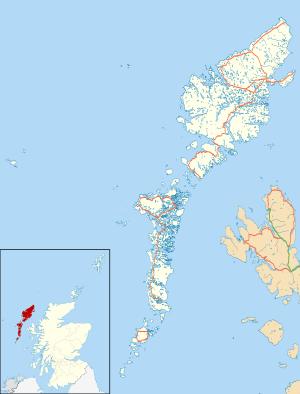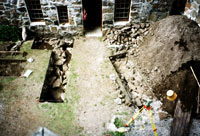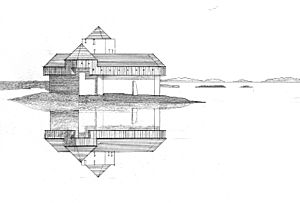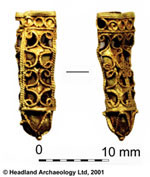Kisimul Castle facts for kids
Quick facts for kids Kisimul Castle |
|
|---|---|
| Part of Barra, Western Isles | |
| Castlebay, Scotland | |
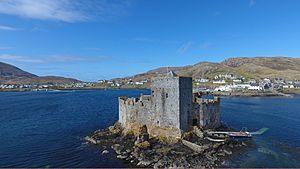
The castle as seen from the air, with Castlebay town in the background.
|
|
| Coordinates | 56°57′08″N 7°29′15″W / 56.9521388989°N 7.48750001°W |
| Type | Rectangular castle |
| Height | 11 metres (36 ft) |
| Site information | |
| Owner | Clan MacNeil |
| Controlled by | Historic Scotland |
| Open to the public |
Yes |
| Condition | Partially restored |
| Site history | |
| In use | Until 1838 |
| Materials | Granite |
Kisimul Castle (Scottish Gaelic: Caisteal Chiosmuil) is an old castle in Scotland. It sits on a small island near Castlebay, a town on the island of Barra. The castle's name means "castle island" in Gaelic. It is a really cool place to visit!
Contents
History of Kisimul Castle
Kisimul Castle is built on a rocky island in the bay. You can only get to it by boat. The castle even has its own fresh water wells. People say that the MacNeil family has lived here since the 11th century.
The Castle's Early Records
We know about Kisimul Castle from writings that are over 450 years old. In 1549, a writer named Dean Monro described a strong castle on an island. He called it "Kiselnin" and said it belonged to the MacNeil family of Barra.
Abandonment and Restoration
Kisimul Castle was left empty in 1838 when the island was sold. Over time, the castle started to fall apart. Some of its stones were even used to build roads in Glasgow!
But in 1937, Robert Lister MacNeil bought the castle and most of Barra. He was the chief of the Clan MacNeil. He worked hard to fix up the castle and bring it back to life.
In 2001, the MacNeil chief made a special deal. He leased the castle to Historic Scotland for 1000 years. The yearly payment is just £1 and a bottle of whisky!
Archaeological Discoveries at Kisimul
Archaeologists are like history detectives. They dig up old things to learn about the past. Headland Archaeology did some important work at Kisimul Castle. They dug in the ground and studied the castle's walls.
Uncovering the Castle's Age
One main goal was to find out how old the castle really is. It was hard to tell just by looking at the walls. But after studying old records and the building itself, they think the castle was built in the late 1400s. This was a time when Gaelic power was strong in Scotland.
Old writings from the 1300s do not mention Kisimul Castle. This suggests it was not built yet. If it had been there, it would likely have been written about.
Timber Hoardings and Castle Design
The castle walls have small holes called "putlog holes." These holes might have held wooden structures called "hoardings." Hoardings were like wooden balconies. They could be used for defense or just to give people more space.
At Kisimul, these holes are not quite where you would expect for defense. So, they might have been more for decoration. Or they could have given people extra room to walk around. This was useful in a small castle on an island.
What Was Found During Digs
Archaeologists dug in the castle's courtyard and other areas. They found lots of building rubble under the ground. This means an older building might have been taken down or collapsed. Its stones were then used to make the courtyard flat.
They also found a stone drain and a paved stone surface. Above these, there was a layer with many animal bones, shells, and broken pottery. These finds tell us about what people ate and how they lived.
Many interesting items were found during the digging. These included:
- Lots of animal bones and shells. Studying these helps us learn about the diet of people who lived there.
- Many pieces of broken pottery. These pieces range from very old (prehistoric) to more recent times.
- Pieces of flint, including a very nice flint blade. These tools and some of the pottery show that people lived on this island thousands of years before the castle was built!
Images for kids


